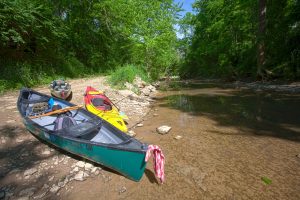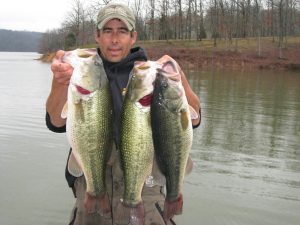 Mayor Greg Fischer today announced a contest to celebrate the Louisville Orchestra’s historic performance this week with guest conductor Michael Tilson Thomas.
Mayor Greg Fischer today announced a contest to celebrate the Louisville Orchestra’s historic performance this week with guest conductor Michael Tilson Thomas.
Tilson Thomas, also known as MTT, is the celebrated music director of the San Francisco Symphony. He will be among the most prominent guest conductors for the Louisville Orchestra since a mid-century visit by Shostakovich and Stravinsky, according to Louisville Orchestra music director Teddy Abrams. More about the concert, including ticket information, can be found at https://louisvilleorchestra.org.
As part of the contest, Mayor Fischer is asking residents to share on social media about how music and the arts changed their lives.
He has posted this question to Facebook and Instagram —residents will have until 5 p.m. Thursday to share their story. The commenter with the best answer will receive two free tickets to the concert conducted by Tilson Thomas and Abrams on Saturday, April 15.
“Promoting rock concerts in college was one of my first experiences as an entrepreneur, and so I’m a big believer in the profound ways art can change a life — and a city,” Mayor Fischer said.
“I’m urging citizens to tell us how music has helped shape their lives, and for music lovers throughout our city — the longtime classical fans, and the new — to make plans to experience this significant moment for the Louisville Orchestra on Saturday.”
MTT will conduct the orchestra for a celebration of American music that includes pieces by Leonard Bernstein, Aaron Copeland, John Adams and George Gershwin, as well as his own pieces.

Photo: Louisville Metro Office of Advanced Planning
The Louisville Metro Office of Advanced Planning will hold public meetings at 6 p.m. on April 19 and May 18 at Girl Scouts of Kentuckiana, 2115 Lexington Road, to discuss safety improvements coming soon to Lexington Road between Grinstead Drive and Payne Street.
The meetings are designed to allow citizens to view and to discuss the proposed improvements with Metro staff. The planned changes implement recommendations of the Lexington Road Corridor Transportation Plan, which was completed in 2015 after extensive community engagement.
Project details include:
- Extending the left turn bay on eastbound Lexington Road to northbound Grinstead Drive, for those traveling to I-64, to accommodate rush hour congestion. The number of lanes at this intersection will not be reduced.
- Lanes in the lower traffic volume area between Grinstead and Payne will be reduced from four to two so that a flush median (buffer zone) can be introduced to separate oncoming traffic and reduce the number of collisions.
- Dedicated left turn lanes will be introduced at Girl Scouts of Kentuckiana, The Woods at Lexington Road, and Payne Street.
- With the reduction in the number of lanes in the lower traffic volume areas, the pavement width will allow for painted, flush medians and bike facilities.
The safety improvements will be coordinated with a scheduled repaving of the Lexington Road corridor slated for later this year. The current Average Daily Traffic (ADT) count—a measurement of the volume of vehicular traffic per day—is currently 10,800 vehicles and has been decreasing since the completion of the Ohio River Bridges Project.
Typical roadway reconfigurations of four lanes to two lanes can accommodate up to 16,000 ADT.
Lexington Road is very similar in design to Grinstead Drive, which underwent a similar reconfiguration in 2012 and has shown a 67 percent reduction in collisions.
Lexington Road from Payne Street to Baxter Avenue is not part of this proposed project, though funding is available to study the Payne to Baxter segment. As part of this future study, additional opportunities for citizens input will be provided.
To view the Lexington Road Corridor Transportation Plan or provide a comment on this project, please visit https://louisvilleky.gov/government/advanced-planning/lexington-road-saf…

Photo: Kentucky State Parks, Pennyrile Forest
Learn about the route of the Cherokee Trail of Tears in western Kentucky during Pennyrile Forest State Resort Park’s Trail of Tears Weekend May 12-13.
The event, co-sponsored by the Friends of Pennyrile, will feature a bus tour of the trail in Caldwell, Crittenden and Livingston counties. The bus will take participants to Mantle Rock Nature Preserve, which is an important point on Trail of Tears National Historic Trail.
The Trail of Tears was a series of forced removals of the Cherokee living east of the Mississippi to what is now Oklahoma.
Guests can attend an introductory program on Friday evening and a historical and musical program on Saturday evening by Laura Hunt Angel.
Space is limited to 50 people.
The fee is $45 and includes the bus tour, a boxed lunch, evening programs and a tour guide. The park is also offering a 10 percent lodging discount. Call 800-325-1711.
The rustic wood and stone Pennyrile Lodge, with 24 rooms, sits serenely on a high cliff overlooking Pennyrile Lake. Open year-round, the park has 12 cottages in the wooded lodge area and on the lake’s shores. The restaurant seats 200, including a private dining room for up to 80. The park also offers hiking trails, fishing, basketball, tennis, camping and horse campsites that are available year-round.

Photo: Kentucky Department Fish and Wildlife
The weather forecast calls for a redbud winter to hit this week. This old saying refers to cold snaps that occur in early April when the redbud trees bloom.
The up and down nature of spring weather can cause consternation among anglers when planning fishing trips. Concerns about the weather is one of three things to consider when planning fishing trips this spring.
1. Barometric pressure is key to unlocking fish behavior in spring:
Barometric pressure is the measurement of the weight of an entire column of air pressing down upon the Earth. Approaching storm fronts in spring ease this weight, resulting in low barometric pressure. The low pressure releases humidity trapped in the atmosphere, resulting in rain or snow.
The dark, low clouds, winds and precipitation that accompany low pressure systems limit light penetration into the water column, providing a better environment for predator fish to ambush prey. Fish do bite better before a front.
High pressure systems follow low pressure frontal systems. In North America, high pressure systems flow out in a clockwise pattern, resulting first in winds from the north and eventually from the east.
“I don’t believe in too many old wives tales when it comes to fishing, but ‘wind from the east, fish bite least’ is one I do believe in,” said Maj. Shane Carrier, assistant director of Law Enforcement for the Kentucky Department of Fish and Wildlife Resources. “I don’t catch many fish when the wind is from the east.”
A couple of days of stable weather in spring ease the influence of high pressure and get fish biting again. The sunny days typical of high pressure warm the water and stir fish activity.
Plan your trips this spring to fish either right before a low pressure system or on the third or fourth day of stable weather.
2. Making sense of the USGS streamflow charts to plan float trips on Kentucky streams:
The streamflow information on the U.S. Geological Survey (USGS) webpage at www.waterdata.usgs.gov provides invaluable information for paddlers and anglers. On this page, select Kentucky from the drop down menu on the top right hand corner to view the flow on streams on all of the river drainages in Kentucky.
The rate of flow on this page shows as CFS or cubic feet per second. The cubic feet per second expresses the amount of flow that passes the USGS stream gauges per second. The higher the CFS, the higher and swifter the water.
The chart for an individual stream shows the discharge for each day of the preceding week as well as the current day. A small triangle on the chart shows the median, or midpoint, flow for each day based on years of data. A flow measuring much higher than the median means high, and usually muddy, water, not the best conditions for fishing and floating.
A flow under the median usually means tolerable fishing and paddling conditions. The USGS streamflow page also has a chart showing the gauge height for each stream. This helps flesh out the data provided by the streamflow chart. This chart provides a good mental image of the rise, fall or stability of the stream over the last week.
The new Canoeing and Kayaking page on the Kentucky Fish and Wildlife website at www.fw.ky.gov is another invaluable repository of information for stream anglers and paddlers. This page leads to information collected by biologists concerning the fish populations in a stream, the recommended levels for floating selected streams, photos of access sites and fishing tips. The page also contains a link to the Blue Water Trails series, an ongoing initiative detailing the paddling and fishing on streams across Kentucky as well as a printable map.
3. What is a daily creel limit and a possession limit for fishing?
Anglers often get confused about these terms, especially when they are fishing three or more to a boat.
“Whenever anyone is fishing in Kentucky, each angler is entitled to the daily creel limit for that species on that lake, river or stream,” Carrier explained. “There is no boat limit in Kentucky.”
For example, if three anglers fish for crappie on Kentucky Lake out of one boat, each is entitled to 20 crappie, the daily creel limit for crappie on Kentucky Lake and Lake Barkley. There is also a 10-inch minimum size limit for crappie on these lakes, therefore anglers must immediately release any crappie caught less than 10 inches long.
The possession limit is the amount of unprocessed fish a person may hold after two or more days of fishing. In Kentucky, this amount is two times the daily creel limit for any species that has a daily creel limit.
Keep these things in mind as you plan and execute fishing trips this spring. Remember to buy your 2017-2018 fishing license, as the new license year began March 1.

Photo: Kentucky State Parks
Experience the beauty of the Carter Caves Wildflower Pilgrimage April 21-22 at Carter Caves State Resort Park near Olive Hill.
Throughout the weekend guests will experience the beauty of the area during wildflower walks. This is the perfect weekend for experienced wildflower enthusiasts, beginner bloomers or those who just enjoy being in the woods to get outside and experience the natural beauty of spring.
The event is sponsored by the Friends of Carter Caves. All trips are free this year.
Participants will be able to sign up for the hikes at the park. Overnight lodging and camping is available. The park’s friends group will host a hot dog cook out on Saturday with proceeds benefiting the park.
Call the park at 606-286-4411 for more information or to make lodging reservations.
In addition to cave tours, Carter Caves offers hiking, mini-golf, fishing and a gem mine. Carter Caves also has a lodge, cottages and restaurant. For more information, call the park at 1-800-325-0059 or visit parks.ky.gov/
Now that the Kentucky-based teams are no longer in the NCAA basketball tournament, the Final Four isn’t nearly as exciting, and somewhat depressing, to watch.
The best cure for any bruised feelings left by March Madness is to get out in early April and chase largemouth bass. A huge largemouth bass shaking its head vigorously trying to throw your white spinnerbait soothes any broken basketball heart.
Water temperatures range from 52 degrees at Lake Cumberland in the east to 58 degrees on Kentucky Lake in the west. In other words, it is prime time.
“With water temperatures in the mid-50s, the big female largemouth bass are staging,” said Jeff Ross, assistant director of Fisheries for the Kentucky Department of Fish and Wildlife Resources. “They are moving from their deeper winter locations to spawning locations in the shallows. They definitely work their way shallow in stages, but a cold front can push them back for a short period.”
At this time of year, the male largemouth bass move shallow first to build nests, followed by the female bass to lay their eggs.
“Recently, I caught a lot of largemouth bass, but they were all small male bass,” said Easton Copley, aquatic education program coordinator for Kentucky Fish and Wildlife. “When you look at their lips, they were roughed up and bloodied. They looked like they had lipstick on them from making spawning beds.”
Copley recommends looking for those staging areas to catch the large female largemouths. Female largemouth bass stage where large mud flats drop-off into deeper water. This is especially true on smaller state-owned lakes.
“At this time of year, I am not looking for numbers of bass,” Copley explained. “I am fishing for big females.”
Ross said to hit the secondary points or ledges near shallow water on the larger reservoirs, such as Kentucky Lake or Barren River Lake. “When the females hit those secondary points in spring, they are pretty close to spawning,” he said.
Copley said when water temperatures climb to 60 degrees, the larger female bass move into their shallow water spawning areas. “I look for rocky banks and transitional banks from rocky to mud,” he said. “If you can find a laydown tree on this kind of bank, all the better.”
Copley throws a variety of lures when spawning bass are up shallow. “I’ve caught a lot of bass on a square-billed crankbait in the Sexy Shad color,” he said. “I also catch quite a few on jigs. Black and blue is my go-to jig color for lakes with some color to the water. In clear water, I like the Cumberland Craw color for my jigs at this time of year.”
White spinnerbaits with a white and chartreuse trailer also draw strikes from shallow spring largemouth bass.
“When the bite gets tough, I pull out a Shakey head with a black and blue 7-inch straight-tailed worm,” Copley said.
Anglers who plan to release their catch need to release the female largemouth bass back to the same area during the spawn. “Take a photo and get them back in the water as soon as possible so they can get back to their spawning,” Copley said. “They are full of eggs.”
Kentucky anglers have oodles of options to catch spring largemouth bass. Check the 2017 Fishing Forecast

Photo: Kentucky Department Fish and Wildlife
for productive largemouth bass lakes near you.
Copley’s favorite lake is south-central Kentucky’s Green River Lake. He also likes 784-acre Cedar Creek Lake in Lincoln County. “Guist Creek Lake near Shelbyville has lots of big fish, but can be tough to fish because of high fishing pressure,” he said.
Kentucky Lake and Lake Barkley ranked number 4 in the Southeast Region for 2016 on Bassmaster Magazine’s Best Bass Lakes in the Country rankings. These lakes offer arguably the best chance in Kentucky to catch largemouth bass 4 pounds and larger
“We have many lakes where you don’t need a 20-foot bass boat to catch a big bass,” Ross explained. “Our smaller state-owned lakes, such as Kincaid Lake in northern Kentucky and Lake Malone in western Kentucky, are trophy largemouth bass lakes. Both of these lakes have excellent facilities for anglers at Lake Malone State Park and Kincaid Lake State Park. Beshear Lake, mainly located inside Pennyrile State Forest in western Kentucky, is always a big bass producer. Cranks Creek Lake in southeastern Kentucky also has some huge bass in it.”
The Final Four may be a bummer for Kentuckians this year, but warm days and trophy largemouth bass will put the NCAA tournament in the rearview mirror.
Remember to buy your 2017-2018 fishing license if you haven’t already.

Photo: Kentucky Derby Festival
Thunder Over Louisville fans making plans for a place to park their RV, pitch a tent or park their car have an option that’s close to the action. Metro Parks is selling passes for Thunder weekend at Eva Bandman Park, 1701 River Road.
Eva Bandman Park is located along the Ohio River near Frankfort Avenue, less than a 10-minute stroll from the eastern edge of Waterfront Park.
• Recreational Vehicles – RV parking is available beginning Friday, April 21, for $200. All parking spaces can accommodate a 40-foot vehicle with an awning. Additional cars are $15 each for both RV’s & Tents.
• Tents – Campers bringing tents may stay in Eva Bandman Park on Friday and Saturday nights for $50. This includes space for one car, not necessarily next to your tent. Additional cars are $15 each for both RV’s & Tents.
• Parking – On Saturday, April 22, parking spots at Eva Bandman Park will be available as long as space permits, at a cost of $20 per vehicle. Cash only, paid at time of arrival.
Overnight visitors in tents and RVs can stay through Sunday morning. Metro Parks’ staff will be available around the clock. A reservation form can be found here. After staging their site on Friday, those not wishing to camp overnight may exit the park using their extra vehicle and return on Saturday. Previous parking spaces are not guaranteed. Spaces may become limited as Saturday progresses; no other re-entry is authorized.
Advanced registration is highly recommended as the Louisville Police Department will be organizing street closures in the area.
For more information call 502/574-7275 (PARK).
 Weather
Weather Traffic
Traffic @LouisvilleDispatch
@LouisvilleDispatch @LouisvilleDisp
@LouisvilleDisp Subscribe
Subscribe